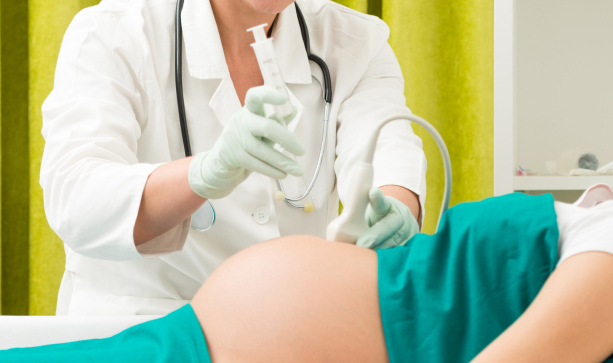A protein injection during pregnancy has cured all of the symptoms in three children suffering from XLHED—a rare and sometimes fatal genetic disorder.
XLHED, or X-linked hypohidrotic ectodermal dysplasia, is an ectoderm developmental disorder[1]. An X-chromosome mutation inactivates ectodysplasin—a protein with a key role in the development of foetal skin and ectodermal derivatives: “Without ectodysplasin, there are no sudoriferous glands and therefore no transpiration, which cools the body through the evaporation of water. This exposes patients to dangerous, even fatal ‘overheating’”, explained Pascal Schneider, who supervises research into this rare disease at the Faculty of Biology and Medicine of the University of Lausanne (UNIL) in Switzerland. “There are also serious consequences for the jawbone, which tends to have only six abnormally pointed teeth on average”.
The sudoriferous glands develop during a short window between the 20th and 30th week of pregnancy. Doctors injected doses of synthetic ectodysplasin into the amniotic fluid via a process similar to amniocentesis. The foetus ingests the protein by swallowing the amniotic fluid. Ectodysplasin therefore acts by promoting the normal or virtually normal development of sudoriferous glands.
Two mothers were treated in the study. Corinna received three protein injections and her twins, who are now ten years old, perspire correctly and got through their first two summers successfully. The second mother had only one injection. Her baby also developed sudoriferous glands, although to less of an extent.
Professor Schneider et al. hope to develop the drug despite the fact that it is unlikely to ever be profitable since the disease affects approximately one in 17,000 people. “In mice and dogs, one treatment has a life-long effect. Let’s hope we get the same result in humans”, said the researcher. Dr Marja Mikkola, a biologist at the University of Helsinki explains: “That’s the remarkable part here, that a genetic disease can be at least partially corrected by a short-term protein treatment”.
Professor Holm Schneider explained that Corinna hesitated about giving her consent to undergo the experimental treatment: “In [Corinna’s] situation you think twice. You think more about the risks involved—three lives—but also the chances that it may bring”.
[1] The ectoderm is the external layer of the embryo which divides into two tissues during development: the epidermis (skin, eyes, nose, ears) and the neuroectoderm (nervous system).
Bionews, Martha Henriques (30/04/2018)
UNIL, Manuela Palma De Figueiredo (26/04/2018)

